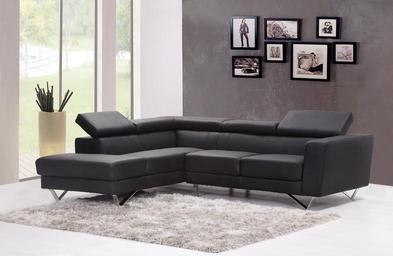Introduction
In a world where our personal spaces reflect our identities, the role of art in home design cannot be overstated. With the rise of contemplative photography, particularly through portraiture, individuals are now able to express their inner selves and create inviting environments that speak to their personal narratives. This article will delve into how contemplative photography can be utilized as a powerful tool in reflective home design, focusing on aesthetic photos walls, large canvas hanging tips, and the myriad ways portraiture intertwines with self-expression through decor.
Contemplative Photography: Using Portraiture for Reflective Home Design
Contemplative photography is not merely about capturing images; it's about storytelling and reflection. When we engage with portraiture as a medium within our homes, we invite moments of introspection and emotional resonance. These artworks can serve as focal points in interior decor inspiration while also transforming environments into personal sanctuaries filled with meaning.
Understanding Contemplative Photography
Contemplative photography emphasizes mindfulness and presence during the process of taking photographs. The aim is to capture genuine moments that resonate with the viewer on an emotional level. By integrating this practice with portraiture—whether through abstract self-portraits or traditional styles—we can explore identity and self-expression through decor.
The Role of Portraiture in Home Design
Portraits have long been used to tell stories, convey emotions, and represent identity. They provide insight into who we are and how we wish to be perceived. In the context of home design, portraits can serve as visual storytelling elements that enhance mood creation in spaces.
Symbolism in Self-Portraits
Self-portraits often carry profound symbolism. They allow individuals to explore their identities while fostering deeper connections with viewers. When displayed thoughtfully in personal spaces with art, these portraits become gateways for reflection.
Creating Inviting Spaces Through Art
Wall Art Placement Strategies
When considering wall art placement within your home, think about how each piece influences the overall atmosphere. Positioning portraits at eye level can draw viewers in more effectively than higher placements. Moreover, grouping smaller pieces together creates a cohesive aesthetic photos wall that encourages exploration and engagement.
Combining Colors and Textures
Color plays a vital role in evoking emotions; thus, combining colors and textures within your artwork can greatly impact the ambiance of a room. Experimenting with different materials—like canvas versus paper—can further enhance visual storytelling in design.
Large Canvas Hanging Tips
When it comes to large canvases, they should dominate the space without overwhelming it. Here are some essential tips for hanging large canvases:
Center It: Place larger pieces centrally on a wall to create balance. Height Matters: Hang at eye level for optimal viewing. Consider Lighting: Natural light can greatly affect how colors appear. Create a Focal Point: Use large canvases to direct attention towards specific areas.Emotional Self-Portraiture as Interior Decor
Exploring Identity Through Artistic Expression
Artistic self-expression is fundamental when it comes to choosing portraits for your home. Fine art self-portraits embody elements of identity exploration through art, inviting viewers to see not just the subject but also the artist's narrative.

The Evolution of Self-Portraits
Self-portraiture has evolved from early painting techniques to contemporary digital practices like abstract vs realism in portraits. Modern self-portrait trends often highlight authenticity over perfection, allowing for faceless self-portraits that convey emotion rather than physical appearance.
Photography Techniques That Enhance Portraits
Effective portrait composition techniques rely heavily on lighting and framing:
- Lighting: Utilize natural light whenever possible; soft diffused lighting tends to create flattering images. Composition: Experiment with angles; sometimes off-center compositions convey dynamic energy. Emotion Capture: Focus on capturing genuine expressions rather than forced smiles.
Curating Personal Sanctuaries with Wall Art
Balancing Design Elements in Your Space
Creating harmony involves balancing various elements within your interior decor—colors, shapes, sizes—all playing a significant role in mood creation in spaces.

Artistic Home Decor Integration Strategies
Incorporate artistic home decor by blending different styles—modern pieces alongside traditional ones can create an eclectic yet cohesive look that reflects personality.
Visual Storytelling Through Photography
Narratives Captured In Frames
Photography captures pivotal moments that transcend time; by displaying these photographs prominently within your living areas, you weave personal narratives throughout your environment—a form of storytelling through photography that invites guests to engage deeply with your space.
Digital vs Film Self-Portraits
Both digital and film formats offer unique qualities; digital photography allows for quick adjustments while film instills a sense of nostalgia—a choice shaped by individual preferences regarding artistic experimentation.

Self-Reflection via Self-Portraits in Decor
Utilizing Art for Personal Reflection
Incorporating self-portraits into your decor serves as more than mere decoration—it becomes an act of self-reflection that reaffirms identity amidst ever-changing landscapes around us.
FAQs
What is contemplative photography?- Contemplative photography focuses on mindfulness during image capture, aiming to evoke emotional responses from viewers through authentic moments.
- You can incorporate portraiture by selecting pieces that resonate personally or reflect meaningful stories—display them prominently as conversation starters or focal points within spaces.
- Center larger pieces at eye-level while considering lighting conditions; ensure they do not overwhelm surrounding elements but instead complement them harmoniously.
- Color significantly impacts emotions; warm hues may evoke feelings of comfort while cooler tones often promote calmness—strategically selecting colors enhances overall ambience.
- Focus on natural light sources for flattering effects; experiment with composition techniques such as framing subjects slightly off-center or utilizing varied angles for depth.
- Self-portraits provide avenues for exploration regarding identity—they represent individual narratives expressed visually while fostering deeper connections between artists and audiences alike.
Conclusion
In conclusion, contemplative photography offers an incredible avenue for self-expression through portraiture within reflective home design contexts. By thoughtfully integrating aesthetic photos walls https://www.oskuleinonenphotography.com/Traces-and-Stories/Tahmelan-Huvilalle-ja-Takaisin/i-9KkNGHR or employing large canvas hanging tips effectively blended with modern and traditional styles alike—one can truly transform environments into curated personal sanctuaries filled with beauty and meaning! Embrace artistic experimentation within your living spaces today!